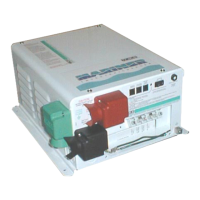%$77(5,(6
&RS\ULJKW7UDFH(QJLQHHULQJ&R,QF 7HOHSKRQH 3DUW1XPEHU
WK
6WUHHW1( )D[ 2FWREHU
$UOLQJWRQ:$86$ ZZZWUDFHHQJLQHHULQJFRP 3DJH
cable must be removed for cleaning. When it is necessary to detach a battery cable from the battery,
turn the DC disconnect switches to the ‘Off’ position. Using the appropriate tool, remove the
Negative battery cable first and install it last.
Use a toothbrush (or other soft bristle brush) and baking soda to remove any stubborn residue.
Sprinkle the baking soda directly on the area and scrub with a wet toothbrush, adding water as
required, then rinse.
Reconnect the battery cable terminals to the battery lugs and tighten to approximately 10 to 15 foot-
pounds using the torque wrench. If you do not have a torque wrench, use the appropriate tool to
tighten the bolts reasonably snug. Do not over-tighten.
After tightening the cables, evenly coat all the exposed metal surfaces of the battery terminals and
lugs with liquid neoprene, which will cure to form an airtight protective layer. If liquid neoprene is not
available, use a light coating of white lithium grease or other sealant. Don’t let anything come
between the mating surfaces of the lugs and terminals.
Cables
Inspect all battery cables for missing or damaged insulation or loose connections. Look closely at any
openings through which the cables pass. All such openings must be equipped with a rubber
grommet or conduit to prevent chafing the cable. If necessary, replace worn grommets. If the cable
insulation is worn, replace the cable.
&DEOLQJ+RRNXS &RQILJXUDWLRQV
Connect individual batteries together to make a larger battery “bank” with heavy cables. The actual
size of the cable depends upon whether the batteries are connected in parallel or series. Generally,
the cables should not be smaller than the inverter cables - if the main cables are 4/0 AWG, the
battery interconnects should be 4/0 AWG.
It is usually preferable to first connect the batteries in series and then in parallel when connecting
smaller batteries together. The best configuration is to connect the batteries both in series and
parallel - a configuration often called “cross-tying”. This requires additional cables but reduces
imbalances in the battery and can improve the overall performance. Consult your battery supplier for
more information regarding the hook-up configuration required for your system.
Connect several smaller batteries together when creating a battery bank of substantial size. There
are three ways to do this. Batteries can be connected in parallel, series, or series - parallel.

